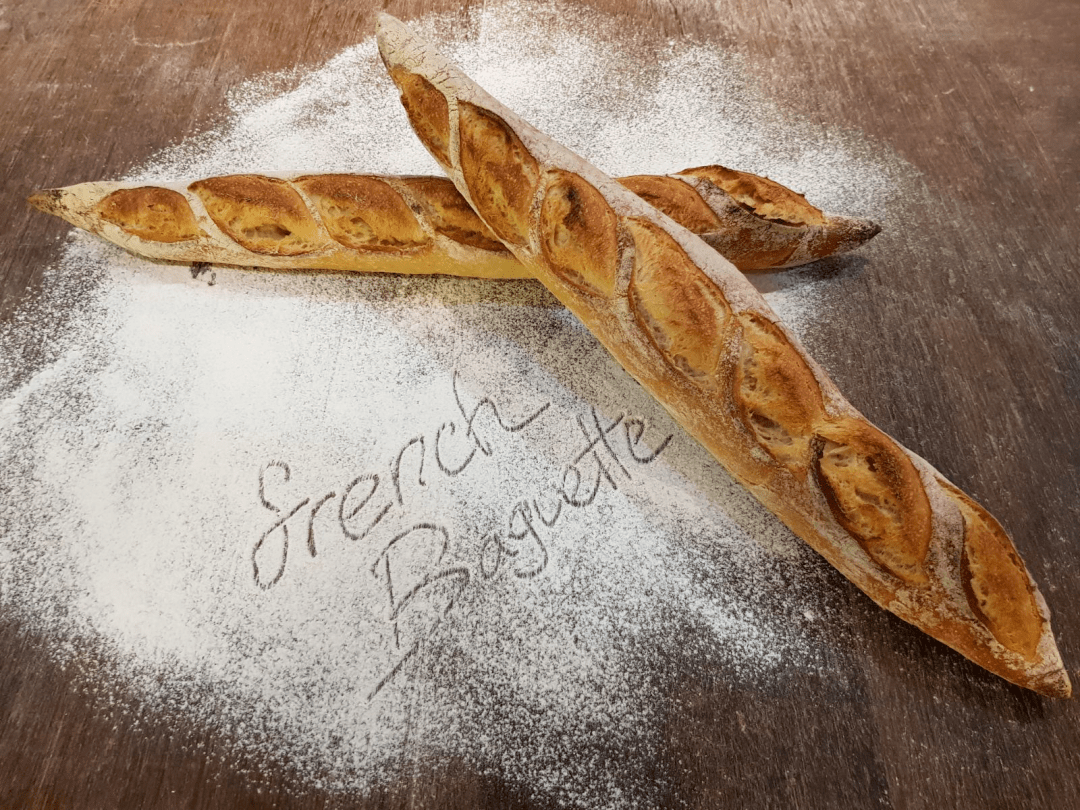
More than six billion baguettes(法式长棍面包) are baked each year in France and the UN agency inscribed the tradition in its “intangible cultural heritage” list.
The baguette is long and thin bread made of flour, water, salt and yeast(酵母). But despite being a seemingly fixture in French life, the baguette only officially got its name in 1920, when a new law specified its minimum weight (80 grams) and maximum length (40 centimetres). Initially, the baguette was considered a luxury product. Then consumption became widespread, and the countryside was won over by baguettes in the 1960s and 70s.
▲ One popular tale is that Napoleon ordered bread to be made in thin sticks that could be more easily carried by soldiers(士兵). Another links baguettes to the construction of the underground railway system in Paris in the late 19th century, and the idea that baguettes were easier to tear up and share, avoiding arguments between the workers and the need for knives.
About 10 billion baguettes are consumed every year in France by a population of 67 million. It drew attention to the steady decline in the number of bakeries(面包店) in the country as around 20,000 of them have closed down since 1970. Then, there were 55,000 artisanal bakeries (one for every 790 residents) compared with 35,000 today (one for every 2,000), often in favour of baguettes produced industrially. The decline is due to the spread of industrial bakeries and out-of-town supermarkets in rural areas. Still, it remains an entirely common sight to see people with a couple of sticks under their arm, happily chewing off the warm end. In March 2021, France nominated the baguette as its candidate for consideration within the UNESCO ICH list.
“It is a recognition for the community of artisanal bakers and chefs who made baguettes,” said Dominique Anract, president of bakeries federation in a statement.
本时文内容由奇速英语国际教育研究院原创编写,未经书面授权,禁止复制和任何商业用途,版权所有,侵权必究!(作者投稿及时文阅读定制请联系微信:18980471698)1.What can we know from Paragraph 2?
A The baguette gained its official name in 1902.
B The baguette weighs up to 80 grams.
C Everyone can afford a baguette at first.
D A true baguette has just four ingredients.
解析:选D。D细节理解题。根据第二段第一句的“The baguette is long and thin bread made of flour, water, salt and yeast.”可知,只用面粉、水、盐、酵母,就能做出一个法式长棍面包。故选D。
2.What can be put back in the “ ▲ ”?
A Why did France nominate it for the UN list?
B How many baguettes do the French eat per day?
C Its earlier history is rather uncertain.
D The French seem to really love their baguettes!
解析:选C。C推理判断题。根据题空后面描述:拿破仑下令用细棍制作面包,这样士兵就更容易携带的故事以及另一种将长棍面包与19世纪末巴黎地下铁路系统的建设联系起来的说法可知,关于法式长棍面包的历史说法很多。具体是怎样的,人们都不确定。故选C。
3.Why did the number of bakeries decrease?
A There are more industrial bakeries and supermarkets in the countryside.
B People in France find other food to take place of the baguette.
C The French get tired of eating the baguette every day.
D The baguette is more and more expensive and people can’t afford it.
解析:选A。A细节理解题。根据第四段的“The decline is due to the spread of industrial bakeries and out-of-town supermarkets in rural areas.”可知,法国手工面包店数量减少是由于工业面包店和超市在城市郊区和农村地区的普及。故选A。
4.What is Dominique Anract’s attitude to the news?
A Indifferent.
B Neutral.
C Negative.
D Positive.
解析:选D。D推理判断题。根据最后一段的“It is a recognition for the community of artisanal bakers and chefs who made baguettes”可知,法国面包房和糕点店全国联合会主席多米尼克·安莱克认为法棍正式被列为人类非物质遗产是对手工面包师群体的认可,因此他持积极态度。故选D。